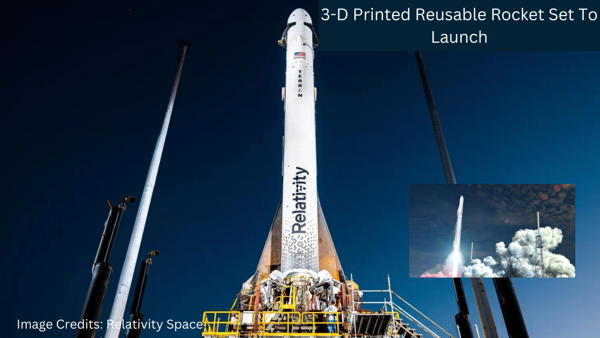
Science & Space
Private Space Rush: Relativity Space's First Fully Reusable 3-D Printed Rocket, Terran1 Sets Date For Launch
During the Cold War, the world witnessed an unfriendly space race between the Soviet Union and the United States.
During that time, Nasa accomplished some remarkable feats that were and continue to triumph for humanity; among all of its triumphs, sending humans to the Moon was the most significant and ground-breaking for today's space pioneers.
Today's private companies are engaging in friendly space battles to send payloads and humans to space, drawing inspiration primarily from NASA and ESA.
Companies such as SpaceX, OneWeb, Virgin Galactic, Blue Origin, and others compete for contracts from companies or nations to launch payloads at low cost and to develop sustainable rockets. Relativity Space is the new addition to this list.
Relativity Space: Terran1 - 3D Print And Fully Resuable Rocket
Relativity Space is an American space company, who have developed a rocket that is fully reusable and entirely made using 3-D printers. This is a remarkable accomplishment for any space organization pursuing the most sustainable and low-cost rocket.
SpaceX is already doing the same thing but on a much larger scale. The idea behind reusable rockets is to recover the ultra-cheap rocket boosters used to launch spacecraft, then refuel and reuse them for future space flights. Elon Mask is the pioneer and pillar behind this concept and technological development.
Relativity Space has developed an expendable two-stage small-lift launch vehicle rocket called, Terran 1, similar to the concept of SpaceX's reusable rocket. Relative Space has been working on this project since 2017, and their rocket is set to take its first flight in Lower Earth Orbit on March 8, 2023. (LEO), securing a launch license and skipping a planned final test.
The company announced that it had received a launch license from the Federal Aviation Administration for its first Terran1 mission. With the license in hand, the company plans to launch the rocket from Launch Complex 16 at the Cape Canaveral Space Force Station in Florida on March 8 between 1 and 4 p.m. Eastern.
This mission is dubbed "Good Luck, Have Fun" by the company.
Terran1 is a two-stage rocket powered by nine Aeon1 engines that burn Methane and Oxygen propellants in a gas-generator cycle, producing 23,000lbf (100KN) of thrust each.
The second stage is powered by a single vacuum optimized version of Aeon1, known as AeonVac, producing 28,300lbf(126KN) of thrust vacuum.
Both of these engines are autogenously pressurized, which means they generate gaseous propellant on their own to pressurize liquid propellant in rockets.
According to Relativity Space, they will replace nine Aeon1 engines of the first stage with a single Aeon R engine with substantially higher thrust.
The rocket launch cost advertised in 2019 was $10 million, but its price has raised to $12 million in 2021. They are also developing more advanced Terran R rockets to raising their payload bar.
Terran1 is capable of launching 1,250 kg of payload into lower earth orbit, which is 185 kilometers above the earth's surface (LEO). The same rocket can also launch a 900 kg payload into the Sun Synchronous Orbit, which is 500 kilometers above the earth's surface. The rocket can launch 700 kg into a 1200 km sun-synchronous orbit. We are seeing payload reduction as the height increases because the rocket is still in development and the company is working to develop more advanced delivery systems.
This will truly be a remarkable achievement if they successfully launch this spacecraft on the scheduled day.
Some Indian companies have come forward with their own rocket technology after government frees the market in space. Skyroot Aerospace is the most significant one for this time being. Other organizations are coming forward but India has to work more to promote the space industry to draw investment in the country.

0 Comments